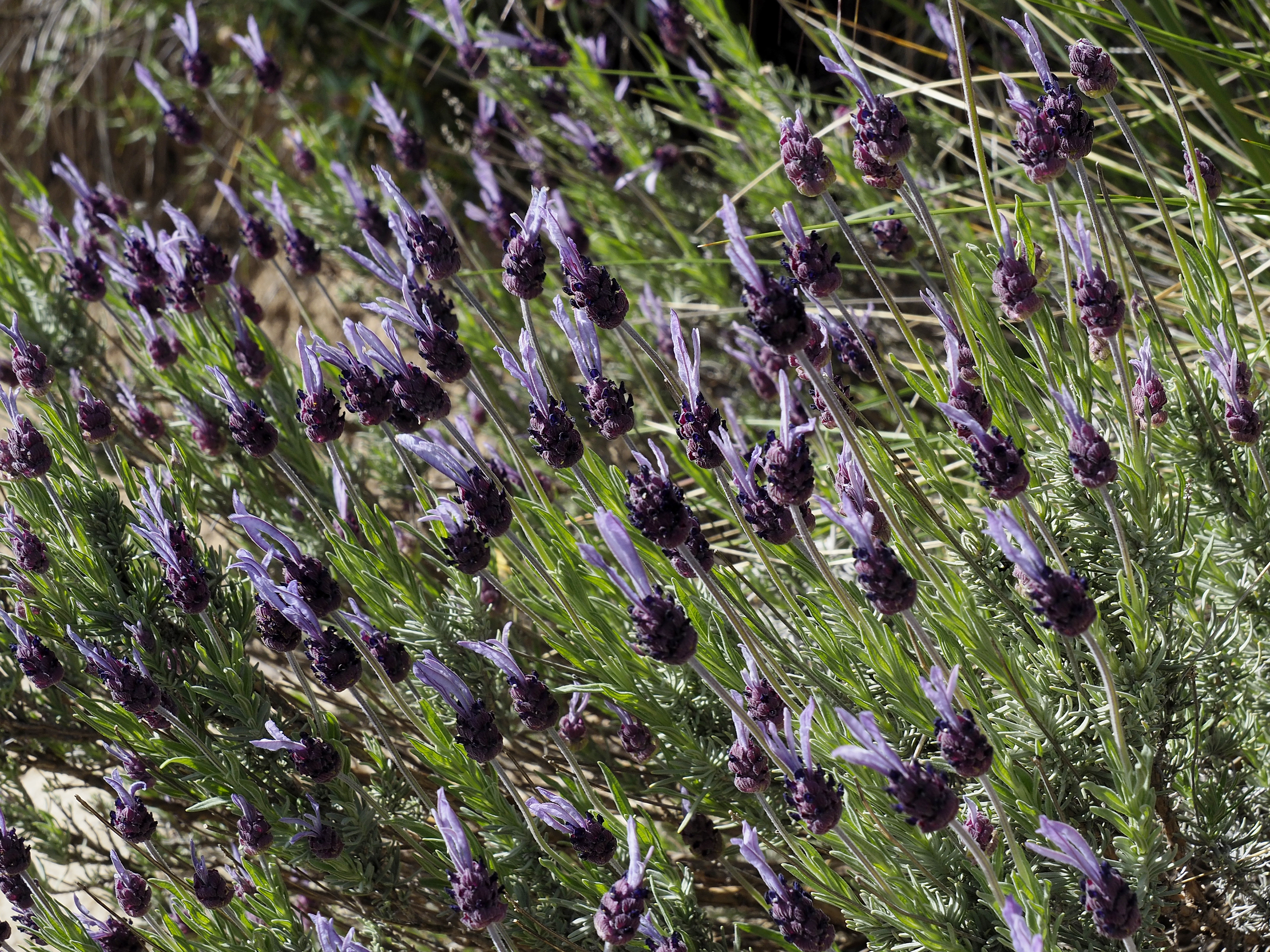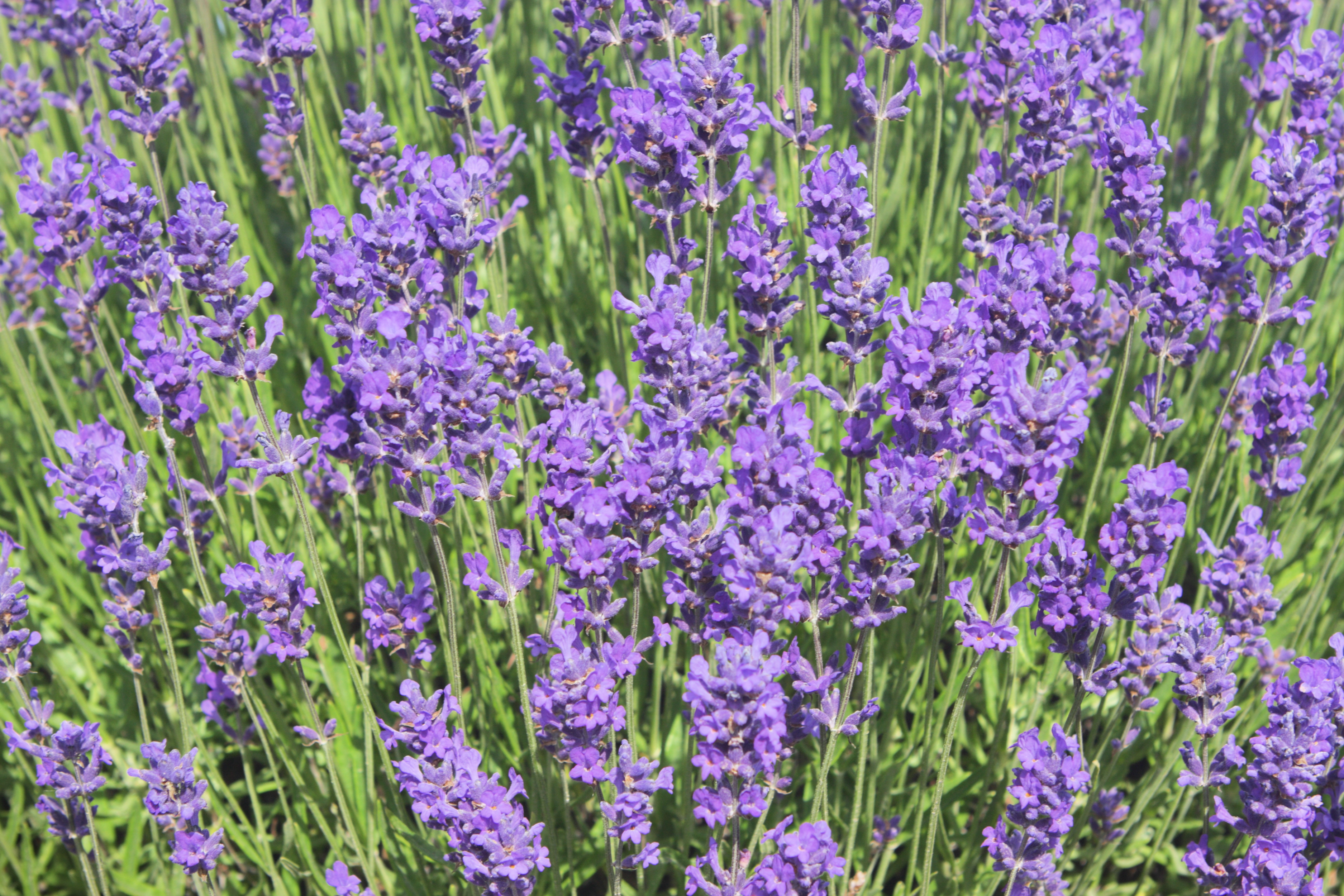
Who doesn't love these fragrant beauties? Lavender is known to be one of the most versatile and easy-to-care-for plants that will without a doubt elevate the way your backyard looks and feels. But did you know, there are a range of different types of lavender to choose from?
'Lavender is a beautiful and versatile plant with several varieties that differ in size, color, and fragrance,' Kasey Eaves, a gardening expert from Vivant Gardening tells us. 'Just make sure you choose the variety that will work best for you. Do you want lavender for culinary use, ornamental reasons, or for crafting essential oils and sachets? Different varieties are better suited for different purposes'.
Whether you looking to plant lavender in containers or add these blooms into your flower beds, there is range to choose from. Here are the main different types of lavender a gardening expert says you need in your backyard.
What are the different types of lavender?

Lavender also known as Lavandula, has over 45 different species with 450 unique varieties. As overwhelming as that sounds, you do not need to worry as we won't be going over every single one!
To make your lavender care journey a little easier, these are the 5 popular lavender varieties that you're most likely to have planted in your yard, or find at your local nursery.
1. English Lavender (Lavandula angustifolia)

English lavender, also referred to as Lavandula Augustifolia is a perennial plant known for its vibrant purple blooms and green foliage. This bloom thrives well as an evergreen shrub and can grow around 1 to 3 feet tall. Try planting lavender in containers if you are looking to add these blooms to your backyard as they are perfect for attracting pollinators such as bees, butterflies and other beneficial insects.
English lavender is also great to add to your backyard edges and borders to brighten up your space this summer. Gardening expert and founder of Vivant Gardening Kasey Eaves tells us, this lavender is ideal as it is ‘compact and fragrant’ and perfect 'for culinary use, aromatherapy and crafting’.
Hardiness zone: 5-9
Soil type: Chalky soil
Sunlight: 6 hours or more of direct sun
Varieties our expert recommends: Hidcote, Munstead, and Royal Velvet
Price: $17.42
Size: 4" pot
2. French Lavender (Lavandula stoechas)

From the type to where to plant lavender, choosing which bloom is right for you and your space can be quite the task. Kasey highlights the French Lavender and says it is often ‘characterized by its distinctive butterfly blooms with petal-like bracts’. Known for its unique appearance and low maintenance abilities — French Lavender can truly thrive even with little to no care.
'French Lavender steals hearts with pale blooms and foliage,' says Kasey 'It also will blooms earlier than other varieties which is encouraging for the impatient gardeners around us. Be ready for more of a wild habits, which makes it great for those wild gardeners among us, whose gardens feature prairie plants and grasses'.
Hardiness zone: 8-9
Soil type: fast-draining, nutrient-poor, alkaline soil
Sunlight: 6-8 hours of direct sun
Varieties our expert recommends: Anouk and Silver Anouk
3. Spanish Lavender (Lavandula stoechas subspecies pedunculata)

Similar to French Lavender with its upright ear-like petals, Spanish Lavender is known to handle heat better than other types of lavender, therefore making it ideal for hot climates. Blooming from mid-spring till late summer, this species also holds quite the charm with its sweet fragrance — making it a popular choice for essential oils and perfumes.
Wondering where to plant this lavender? Well, Spanish Lavender will no doubt look good anywhere you put it, but be sure to plant it in a space that receives lots of sunlight! Kasey says: 'Spanish Lavender is a stunner with dark blooms and bright butterfly tips. It also has longer stems which makes it great for those fellow lavender wand makers in the ‘verse. I love that this one also dries a darker color for crafting purposes'.
Hardiness zone: 7-9
Soil type: Well drained, chalky, loamy soil
Sunlight: 6-8 hours of direct sun
Varieties our expert recommends: Madrid Blue and Kew Red
4. Lavandin (Lavandula x intermedia)

Lavandula x intermedia or lavandin need a little more attention in order to get the best out of its growth. When it is fully developed this sun-loving, drought tolerant plant forms a heap of bushy bright violet blooms. This species of Lavender grows well from mid to late summer and can produce strong, sharp scented flowers which are often cultivated for the production of lavender oil.
But that's not all, these blooms can also enhance the biodiversity of your garden by welcoming beneficial garden insects such as bees and butterflies — so your blooms will be thriving with much love and attention from nature itself.
Kasey tells us: 'If you have room to spare then Lavandin intermedia is great for you. Start your own lavendar farm! Or rather you will feel like it. These plants can grow up to 2 ft in the diameter of their crown but are generally easy to grow and super fragrant'.
Hardiness zone: 5-9
Soil type: Chalk, Loamy soul
Sunlight: At least 6 hours of direct sunlight
Varieties: Grosso, Hidcote Giant, Provence
5. Portuguese Lavendar (Lavanda luisiera or Lavanda latifolia)

Native to the Western Meditteraneon region, Lavanda latifolia or 'spike lavender' is 'similar to English Lavender but with broader leaves. It has tall spike flowers and is great for cut flowers and dried flower crafts,' Kasey tells us. These blooms are also often grown for commercial lavender oil production.
'Portuguese Lavender is striking for those tired of the same old lavender plant,'Kasey adds. 'It grows long dragonfly style wings on top of its long stems, which adds a touch of whimsy. It also provides the benefits of Spanish Lavendar is a slightly more container friendly form.
Hardiness zone: 5-9
Soil type: Well-drained, loamy soil
Sunlight: 6-8 hours direct
FAQS
Which type of lavender looks best?
All these types of lavender look beautiful in their own right, but you might spot some differences in how they're utilized within different styles of gardens.
'In landscaping projects, you'll often see the more bulbous heads of French and Spanish lavender used in either more traditional, or more Mediterranean garden schemes,' says Hugh Metcalf, editor of Livingetc.com. 'When you're looking at more modern landscaping, it's more usual to see something like an English lavender, planted en masse in larger, more naturalistic drifts, so that tends to be my preference for a more contemporary space.'
Lavender is a widely popular plant for all kinds of schemes, but it's vibrant purple isn't to everyone's taste when looking at a more restrained planting color scheme. However, there are lighter, paler varieties of this plant, and even white lavender.
Which type of lavender is most fragrant?

Fresh and full of life, bringing Lavender into your space will add beauty and give you an exhilarating aromatic experience. As you ponder on which lavender to plant, let's get into the most fragrant lavenders that will elevate and inspire your backyard ideas.
The strongest scented lavender out of the list above is Lavandin (Lavandula x intermedia). It carries a stronger and sharper scent compared to other lavenders — this is due to its higher camphor content.
If you want to add these blooms into your backyard, they make a great source of decoration and can be used in rock gardens, as an accent plant or as a culinary herb. This blooms comes in different varieties and includes the: Grosso, Hidcote Giant, Impress Purple, Phenomenal, Provence and Seal lavender.
Next up is the popular English Lavender (Lavandula angustifolia), with a light sweet smelling scent, due to carrying a low camphor content. This lavender looks great along walkways, rock gardens and herb gardens. It also comes in many different varieties including the: Folgate, Hidcote and Royal Velvet Lavender.







